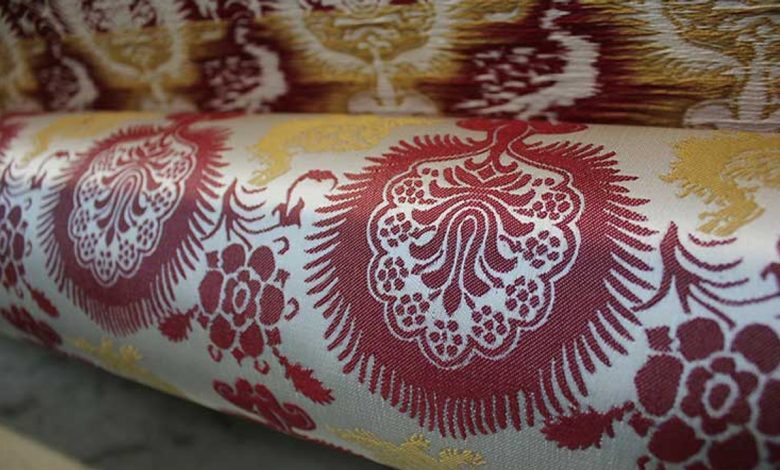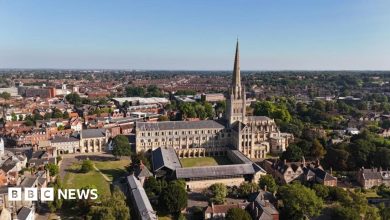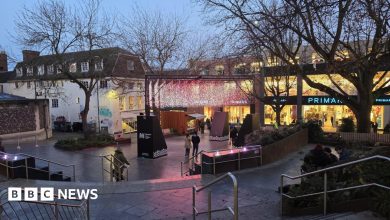After 550 years, a fabric found in a Norwich bishop’s tomb is recreated – The Art Newspaper

Reviving Bishop Lyhert’s Ceremonial Silk: A 550-Year Journey from Tomb to Recreation
In the heart of Norwich Cathedral, a remarkable story of textile archaeology and historical preservation has unfolded. Nearly 550 years after Bishop Walter Lyhert was laid to rest in 1472, the sumptuous silk vestments that adorned him in death have been meticulously recreated, offering us a glimpse into the splendor of medieval ecclesiastical fashion. When workers opened Lyhert’s tomb during construction in 1899, they were astonished to discover the bishop buried in magnificent attire. Small fragments of this opulent fabric were carefully extracted, with most remaining in Norwich and approximately sixteen pieces finding their way to London’s Victoria and Albert Museum. These delicate silk remnants, too fragile for continuous display, have largely been hidden from public view for over a century. “They seem to have taken out just the best pieces, washed them and then folded the edges and pressed them,” explains Agata Gomolka, project assistant curator for Norwich Castle’s redevelopment. The tiny holes from thread visible on the original fragments suggest they were once mounted for display, perhaps even featured in exclusive private exhibitions before being relegated to storage.
The ambitious recreation project emerged as part of Norwich Castle Museum and Art Gallery’s £23 million redevelopment of its Norman keep, which reopened in August after a decade-long renovation. This collaborative effort involved Norwich Cathedral, Gainsborough Silk Weaving in Suffolk, and the Norwich Costume and Textile Association. Their goal was not merely preservation but revitalization – to bring these fragments back to life in a form that could safely showcase the magnificent patterns and vibrant colors that had once adorned Bishop Lyhert. The newly woven silk now stands alongside rotating displays of the original fragments, carefully managed to prevent further deterioration of these precious historical artifacts. This thoughtful approach allows visitors to experience the grandeur of medieval ecclesiastical textiles while ensuring the preservation of the original pieces for future generations.
The research phase revealed two distinct designs within the fragments, each telling its own story through symbols and patterns. “Design A” features an intriguing monogram “M” (possibly representing Mary) alongside floral patterns resembling tulips. Gomolka’s research uncovered a remarkably similar fabric depicted in Paolo and Giovanni Veneziano’s 1358 painting “Coronation of the Virgin,” now housed in New York’s Frick Collection – establishing a fascinating connection between this fabric and broader artistic traditions of the period. “Design B” incorporates different floral elements, notably pomegranates, alongside birds that researchers believe represent phoenixes – an unusual motif in 15th-century silk patterns. Gudrun Warren, librarian and curator at Norwich Cathedral, notes the spiritual significance: “The phoenix can be seen as a symbol of Christ, because it also dies and rejuvenates.” This rich symbolism highlights how these vestments served not merely as clothing but as complex theological statements woven into fabric. When scholars gathered at a conference for the study of Silk Road textiles in Norwich in 2023, they identified diverse influences in these designs spanning from Chinese to Islamic traditions, underscoring the international nature of medieval textile trade and artistic exchange.
The recreation process combined traditional craftsmanship with modern scientific analysis in a remarkable feat of historical detective work. The team began by using high-resolution photography to update the Victorian design drawings made in 1899, carefully piecing together the complete pattern repeat from the fragmentary evidence. “The fragments gave just enough information about the complete pattern repeat,” Gomolka explains, highlighting the precarious nature of this reconstruction work. Chemical testing of the fibers at the University of East Anglia revealed that the original phoenixes had been rendered in gilded silver thread, a luxurious touch befitting a bishop’s ceremonial vestments. Further scientific analysis conducted by experts at the British Museum and KIK-IRPA in Brussels identified the original dyes: madder red and orchil purple in Design A, and madder red in Design B. This level of detailed analysis allowed the recreation to capture not just the patterns but also the authentic color palette of the original textiles, though with necessary modern adaptations. For practical reasons, gilded metal areas were represented with gold-colored thread, and a synthetic purple replaced the orchil originally derived from lichens.
After two years of intensive research, design refinement, and meticulous production, the recreated silk has finally found its place within Norwich Castle’s exhibits. Visitors can now witness this vibrant connection to the past, experiencing the rich colors and intricate patterns that once adorned Bishop Lyhert in his final rest. The project also offers a rare opportunity for modern audiences to take home a piece of this history, as a limited amount of the recreated silk is available for purchase in the museum shop. This thoughtful approach to public engagement helps sustain interest in textile history while potentially funding future conservation efforts. The journey of these silk fragments – from medieval vestments to tomb artifacts to carefully preserved museum pieces to newly recreated fabric – represents an extraordinary cycle of creation, preservation, and renewal that spans more than five centuries.
Perhaps most poetically, Norwich Cathedral now hopes to commission a set of ceremonial copes from the recreated silk, bringing this fabric full circle to serve once again in the very building where Bishop Lyhert once presided. This final step transforms what could have remained merely a museum artifact into a living piece of heritage – a textile that continues to fulfill its original sacred purpose while connecting present-day worshippers with their medieval predecessors. The recreation of Bishop Lyhert’s silk vestments demonstrates how historical preservation can be both scientifically rigorous and spiritually meaningful, allowing objects from the past to continue their cultural journey into the future. What began as tiny fragments rescued from a tomb has blossomed into a vibrant testament to the enduring beauty and significance of ecclesiastical textiles, reminding us that with care and commitment, even the most delicate threads of history can be rewoven into our present experience.









bao7y4
I conceive this web site holds some rattling wonderful info for everyone :D. “Experience is not what happens to you it’s what you do with what happens to you.” by Aldous Huxley.
Useful information. Fortunate me I found your web site unintentionally, and I’m surprised why this twist of fate did not took place earlier! I bookmarked it.
I relish, lead to I found exactly what I was looking for. You’ve ended my 4 day long hunt! God Bless you man. Have a great day. Bye
Greetings I am so glad I found your web site, I really found you by mistake, while I was browsing on Digg for something else, Nonetheless I am here now and would just like to say thank you for a incredible post and a all round enjoyable blog (I also love the theme/design), I don’t have time to read through it all at the minute but I have bookmarked it and also added in your RSS feeds, so when I have time I will be back to read a lot more, Please do keep up the fantastic work.
Thank you for the sensible critique. Me and my neighbor were just preparing to do a little research on this. We got a grab a book from our local library but I think I learned more from this post. I am very glad to see such excellent info being shared freely out there.
I like this post, enjoyed this one thank you for putting up. “We are punished by our sins, not for them.” by Elbert Hubbard.